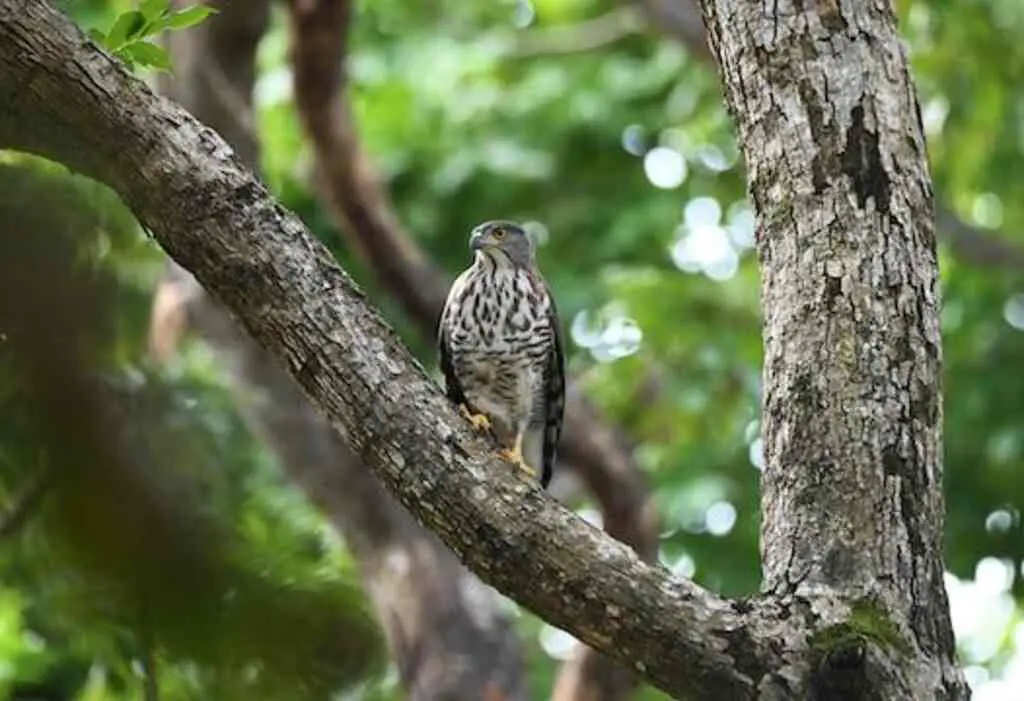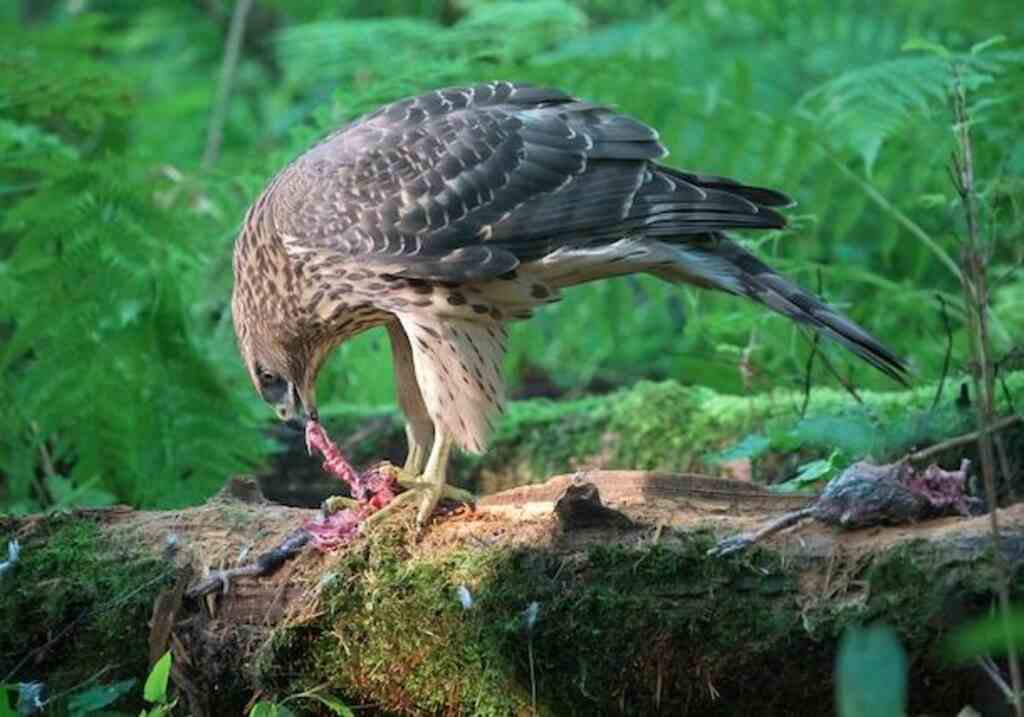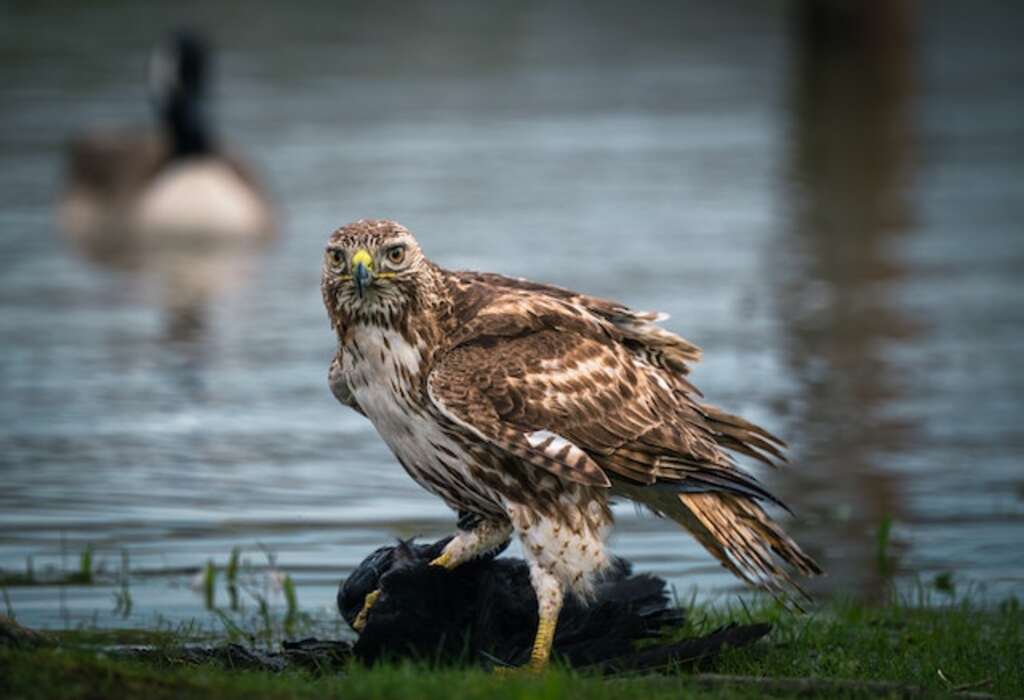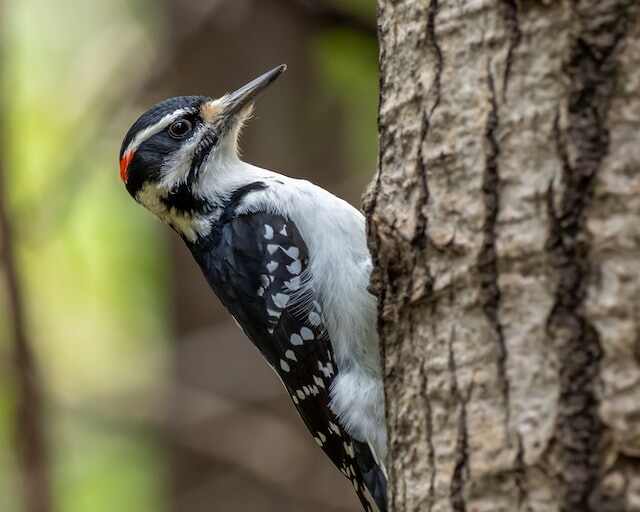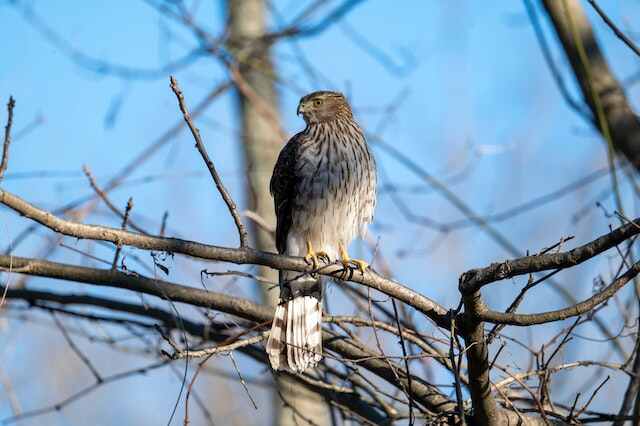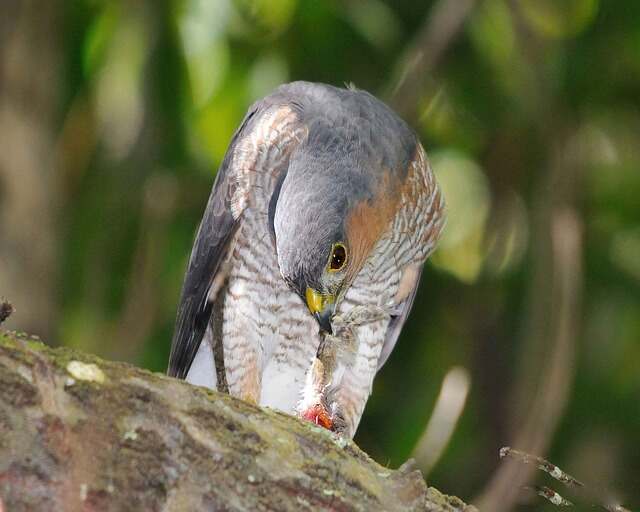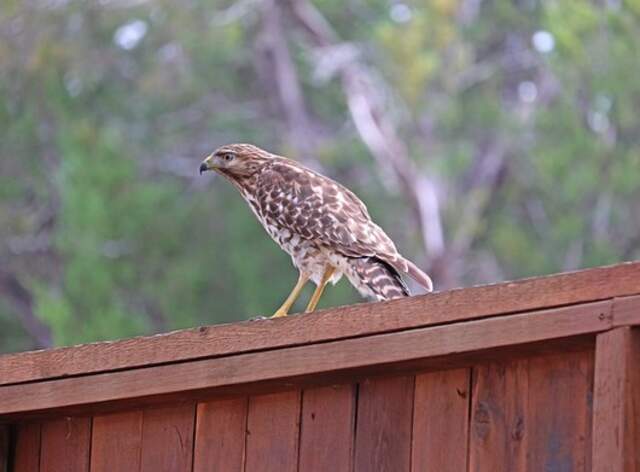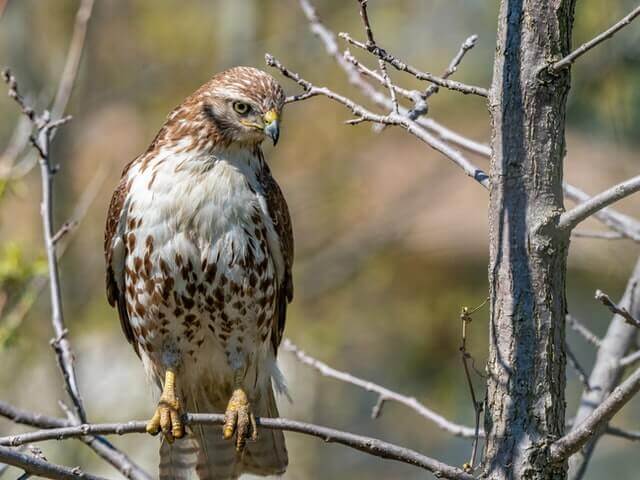Hawks and woodpeckers are two of the most fascinating bird species in the world. These birds have unique characteristics that make them stand out from other bird species.
Hawks, for instance, are known for their sharp talons and keen eyesight, which they use to hunt their prey.
Woodpeckers, on the other hand, are known for their ability to peck wood, which they use to create nests and search for food.
In recent times, there has been growing interest in the question of whether hawks eat woodpeckers.
This question has attracted the attention of ornithologists and bird enthusiasts alike, who seek to understand the dynamics of the interaction between these two bird species.
In this article, we delve into the world of hawks and woodpeckers, exploring their classification, habitat, diet, and interactions.
We also examine the factors that affect the relationship between hawks and woodpeckers and the types of hawks and woodpeckers that are involved in this interaction.
So, do hawks eat woodpeckers? Read on to find out.
Table of Contents
- 1 Key Takeaways
- 2 Overview of Hawks and Woodpeckers
- 3 Classification and Habitat of Hawks
- 4 Classification and Habitat of Woodpeckers
- 5 Diet of Hawks
- 6 Diet of Woodpeckers
- 7 Hawk and Woodpecker Interactions
- 8 Do Hawks Eat Woodpeckers
- 9 Types of Hawks that Hunt Woodpeckers
- 10 Types of Woodpeckers that Hawks Hunt
- 11 Factors that Affect Hawk and Woodpecker Interactions
- 12 Frequently Asked Questions
- 13 Conclusion
- 14 Author
Key Takeaways
- Hawks are known to be opportunistic predators and may prey on smaller birds, rodents, and reptiles, including woodpeckers.
- Woodpeckers have defense mechanisms to protect themselves from hawks, but hawks can still be persistent hunters.
- Ecological factors such as habitat use, prey availability, and competition play a significant role in hawk and woodpecker interactions.
- Understanding the factors that affect hawk and woodpecker interactions is crucial for gaining insight into the complex relationships between different bird species in their natural environments.
Overview of Hawks and Woodpeckers
An examination of the ecological roles and dietary habits of hawks and woodpeckers reveals distinct differences in their feeding behaviors and habitats.
Hawks are predatory birds that primarily feed on other birds, small mammals, and reptiles.
They are known for their keen eyesight and powerful talons, which allow them to capture their prey with great precision and force.
In contrast, woodpeckers are primarily insectivores, using their sharp beaks to drill into trees and search for insects hiding inside.
They also play a vital role in maintaining healthy forests by creating cavities in trees that serve as homes for other bird species.
Despite these differences, both hawks and woodpeckers are important components of their respective ecosystems and have significant ecological impacts.
However, conservation efforts are needed to protect these birds from habitat loss and other threats.
With this in mind, it is important to understand the classification and habitat of hawks, which will be discussed in the subsequent section.
Classification and Habitat of Hawks
The classification and habitat of hawks provide insight into their ecological role and behavior. Hawks belong to the family Accipitridae, which is divided into 3 subfamilies: Accipitrinae, Buteoninae, and Circaetinae.
The subfamily Accipitrinae includes hawks with short, rounded wings and long tails, such as the Cooper’s hawk and sharp-shinned hawk.
The subfamily Buteoninae includes larger hawks with broad wings and short tails, such as the red-tailed hawk and rough-legged hawk.
The subfamily Circaetinae includes hawks with long, pointed wings and long tails, such as the snake eagle and harrier hawk.
Hawks are found in a wide range of nesting habitats, including forests, grasslands, deserts, and wetlands.
Some hawk species, such as the red-tailed hawk, build nests in trees, while others, such as the burrowing owl, nest in burrows in the ground.
The nesting habitat of a hawk can have a significant impact on their behavior, diet, and breeding habits.
For example, hawks that nest in open grasslands may feed on rodents and other small mammals, while those that nest in forested areas may feed on birds and insects.
Understanding the classification and habitat of hawks can help us better understand their behavior and ecological role in their respective ecosystems.
Moving on to the subsequent section, the classification and habitat of woodpeckers also plays a crucial role in their behavior and ecology.
Classification and Habitat of Woodpeckers
Woodpeckers are classified into the family Picidae, which includes over 200 species of birds found in almost every part of the world.
These birds are known for their unique behavior of pecking on trees, which is used for feeding, communication, and creating nesting holes.
Woodpeckers have adapted to a diverse range of habitats, from forests to deserts, and can be found in both urban and rural areas.
However, due to habitat loss and fragmentation, many woodpecker species are facing conservation concerns.
Ornithologists and conservationists are working to protect these birds and their habitats to ensure their survival.
Now, moving onto the diet of hawks.
Diet of Hawks
Predatory birds of the family Accipitridae have a diverse diet, which can range from small mammals to reptiles and even other birds.
Hawks are known to be opportunistic predators, meaning they will feed on any prey that is available to them.
They typically hunt by soaring high in the sky, scanning the ground for potential prey, and then swooping down to catch them with their sharp talons.
In terms of prey selection, hawks tend to target smaller birds, rodents, and reptiles. However, they have been known to prey on larger animals such as rabbits and squirrels if the opportunity arises.
When it comes to woodpeckers, hawks have been observed hunting and killing them, particularly the smaller species.
While woodpeckers may not be a primary food source for hawks, they are still considered a potential prey item.
Understanding the diet of hawks is important for understanding their role within ecosystems and how they may impact other species. Moving forward, we will examine the diet of woodpeckers in more detail.
Diet of Woodpeckers
In regards to their dietary habits, it is worth exploring the feeding behaviors of woodpeckers. Woodpeckers are primarily insectivorous, meaning they feed on insects and other invertebrates.
They have a unique foraging behavior known as ‘tongue probing,’where they use their long, barbed tongues to extract insects from tree bark and crevices.
Additionally, woodpeckers also consume sap, fruits, and nuts, particularly during the winter months when insects are scarce.
Their feeding habits play an important role in their ecosystem, as they help control insect populations and distribute nutrients through their feeding and nesting activities.
An ornithologist or bird expert would use scientific terminology and methods to describe and analyze the behavior of woodpeckers, including their diet, habitat, and breeding habits.
It is important to remain objective and unbiased in studying woodpecker feeding, avoiding personal opinions or beliefs that may influence the analysis of their behavior.
Transitioning to the subsequent section about hawk and woodpecker interactions, it is important to understand the feeding habits of both species to fully comprehend their interactions in nature.
Hawk and Woodpecker Interactions
The interaction between hawks and woodpeckers is a fascinating topic in ornithology, as it involves a complex balance between predator and prey.
Hawk and woodpecker behavior is influenced by a variety of factors, including habitat loss and competition for resources.
A recent study found that some species of hawks may use woodpecker nests for their own breeding purposes, leading to competition and potential predation of woodpecker young.
This highlights the impact of habitat loss on their interactions and emphasizes the need for conservation efforts to protect both species.
Ornithologists use scientific terminology and methods to describe and analyze the behavior of birds, including their diet, habitat, and breeding habits.
Their objective and unbiased perspective ensures that their writing is based on accurate and reliable information about bird behavior.
Understanding the complex interactions between hawks and woodpeckers is crucial for maintaining healthy ecosystems and biodiversity.
In the next section, we will explore the types of hawks that hunt woodpeckers.
Do Hawks Eat Woodpeckers
Yes, hawks occasionally eat woodpeckers. While hawks primarily feed on small mammals and birds, they may prey on woodpeckers if the opportunity arises.
Hawks are opportunistic predators and will target any available prey that fits their hunting strategy, including woodpeckers.
However, the specific frequency and circumstances of such predation can vary among different hawk species and habitats.
Types of Hawks that Hunt Woodpeckers
Various species of birds of prey have been observed hunting woodpeckers, including some of the most common hawks found in North America.
Hawks and woodpeckers have coexisted and interacted in the same habitats for many years, resulting in a variety of hunting strategies that hawks have developed to catch their feathered prey.
Hawks, such as the Cooper’s hawk, use their agility and speed to chase woodpeckers through the trees, while others, like the red-tailed hawk, use their sharp talons and keen eyesight to swoop down and grab their prey.
Interestingly, some hawks have even been observed using woodpecker nests as a source of food by raiding them for eggs and chicks.
However, not all hawks prey on woodpeckers, as some species prefer different types of prey.
Nevertheless, the hunting strategies and prey preferences of hawks towards woodpeckers provide insights into the complex and dynamic relationships between predators and prey in the natural world.
Moving forward, understanding the types of woodpeckers that hawks hunt can shed further light on the intricate web of interactions among different bird species in their shared habitats.
Types of Woodpeckers that Hawks Hunt
Different species of woodpeckers that are commonly hunted by hawks include the downy woodpecker, hairy woodpecker, and red-bellied woodpecker.
These birds are often targeted by hawks due to their small size and frequent presence in open areas, which makes them easy prey for these predatory birds.
Woodpeckers have evolved several defense mechanisms to protect themselves from hawks, including hiding in tree cavities or using their sharp beaks to fend off attacks.
However, hawks are persistent hunters and will often continue to pursue woodpeckers until they are successful in capturing them.
Ornithologists and bird experts have extensively studied the behavior of predatory birds and the interactions between hawks and woodpeckers in particular.
Through scientific research, they have gained a deeper understanding of the ecological factors that influence these interactions, including habitat characteristics, prey availability, and competition among different bird species.
As we delve deeper into the factors that affect hawk and woodpecker interactions, we can gain a better understanding of the complex relationships between different species of birds in their natural environments.
Factors that Affect Hawk and Woodpecker Interactions
Understanding the ecological factors that influence hawk and woodpecker interactions is crucial for gaining insight into the complex relationships between different bird species in their natural environments.
Factors influencing predator-prey dynamics, such as habitat use, prey availability, and competition, play a significant role in determining whether hawks and woodpeckers are likely to encounter each other in the wild.
Ecological niche partitioning, or the process by which different species divide up resources to reduce competition, can also affect hawk and woodpecker interactions.
For example, some woodpecker species may feed on different types of insects or use different parts of trees than others, which could reduce the likelihood of hawks preying on them.
Additionally, the presence of other predators or prey species in the area may influence the behavior of both hawks and woodpeckers.
By considering these and other ecological factors, researchers can gain a better understanding of the complex interactions that occur between different bird species in their natural habitats.
Frequently Asked Questions
How long do hawks typically live?
Factors affecting hawk longevity include genetics, environment, and predation. Compared to other birds of prey, hawks typically live 10-20 years. Accurate and objective analysis of bird behavior reveals the complexity of their lifespan, highlighting the importance of conservation efforts.
What is the average lifespan of a woodpecker?
The average lifespan of a woodpecker varies by species, with some living up to 20 years. While woodpeckers are preyed upon by hawks, their lifespan is mainly influenced by factors such as habitat and availability of food.
How do hawks hunt for their prey?
Hawks employ various hunting techniques depending on their prey selection. They use their sharp vision and agility to catch small birds and mammals, while larger prey is hunted using surprise attacks and strategic positioning.
Can woodpeckers defend themselves against hawks?
Woodpeckers have several ways to defend themselves against predators, such as staying alert, using camouflage, and using their sharp beaks to fight back. However, predation can still have an impact on woodpecker populations, as it can reduce their numbers over time.
Do hawks have any natural predators?
Predators vs prey is a fundamental aspect of ecology. Hawks have natural predators, including larger birds of prey, snakes, and mammals. Evolutionary adaptations such as flight, camouflage, and defensive behavior are crucial for survival in the wild.
Conclusion
In conclusion, the relationship between hawks and woodpeckers is complex and multifaceted. Both birds occupy distinct niches in the environment, with hawks being apex predators and woodpeckers being specialized insectivores.
While hawks are known to prey on woodpeckers, this is not a common occurrence and is largely dependent on factors such as habitat, prey availability, and competition.
Various types of hawks, such as the Cooper’s hawk and the sharp-shinned hawk, have been observed hunting woodpeckers, particularly in urban and suburban areas.
However, the most commonly hunted woodpeckers are smaller species such as the downy and hairy woodpeckers.
Factors such as habitat fragmentation and human activity have also been shown to influence hawk and woodpecker interactions.
In the world of ornithology, it is important to approach the study of bird behavior with accuracy, scientific rigor, and objectivity.
By doing so, we can better understand the complexities of the natural world and the relationships between different species, such as hawks and woodpeckers.
As the saying goes, ‘the devil is in the details’, and it is only by delving deep into the intricacies of bird behavior that we can truly appreciate and marvel at the wonders of the avian world.

